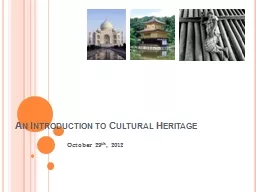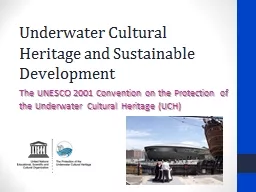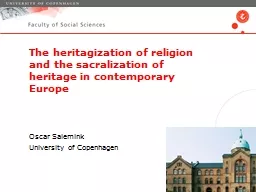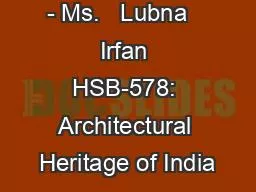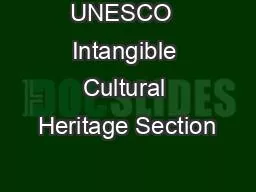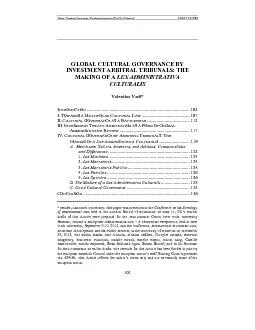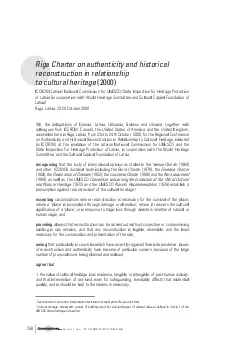PPT-An Introduction to Cultural Heritage
Author : test | Published Date : 2016-07-13
October 29 th 2012 What is Heritage Heritage is anything that is considered important enough to be passed on to the future generations Heritage is broadly categorized
Presentation Embed Code
Download Presentation
Download Presentation The PPT/PDF document "An Introduction to Cultural Heritage" is the property of its rightful owner. Permission is granted to download and print the materials on this website for personal, non-commercial use only, and to display it on your personal computer provided you do not modify the materials and that you retain all copyright notices contained in the materials. By downloading content from our website, you accept the terms of this agreement.
An Introduction to Cultural Heritage: Transcript
Download Rules Of Document
"An Introduction to Cultural Heritage"The content belongs to its owner. You may download and print it for personal use, without modification, and keep all copyright notices. By downloading, you agree to these terms.
Related Documents

